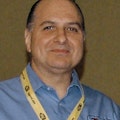This month, TST members share some of their personal diagnostic stories. Consider the process they used to successfully complete the repair as you read them. How would you have approached these problems?
Like this article? Sign up for our enews blasts here.
Chevy S10 Wiring Problems
By Bob Powell, TST member
Here’s how we diagnosed this car.
First, we questioned the customer. The customer recently bought the truck and said it had the brake light problem the whole time he had it. It was only now that he wanted to finally fix it.
After a few minutes of looking at the aftermarket electronics and troubleshooting, Eric told me that the lights remained lit even with the brake light switch removed. Because of this, we knew that there was power from somewhere being fed into the brake light feed wire, a short to power. We were fairly certain at this point that the problem was likely due to a circuit cross feed from one of the electronics installations.This was a mistake, an assumption we made because of all the aftermarket accessories installed and past experiences we had had.
At this point, I suggested disconnecting any connectors in the circuit to try to isolate the location of the fault. During this process, Eric mentioned that he noticed the lights would come on for a couple of seconds and then shut off if the key was turned on, but with the engine not started.
When he went to show me this little phenomena, it didn't happen so we didn't take this clue seriously at the time. Oh yeah, that was another mistake. In hindsigh,t it didn't happen because other things were disconnected before he tried to show me the symptom, but we’ll get to that later.
After a while I decided we needed to re-group and take another look at the wiring diagram. I pulled out my Powerprobe in order to apply power to the brake light circuit at the brake light switch. What I saw surprised me. The brake lights came on, but so did the fuel pump. Now the symptom Eric experienced earlier began to make some sense and we started to examine the wiring going to the fuel tank.
It turns out that a fuel tank bracket was removed at some point and when it was replaced it pinched the rear harness, effectively connecting the fuel pump and brake light feed wires together.
We fixed the problem but the lesson here is to pay more attention to any clues you come across. Once we realized that the brake and fuel pump circuits were connected it only took a quick inspection of the frame harness to locate the fault.
1999 Chevrolet Trailblazer Starting in Second Gear
By Kevin Quinlan, TST member
This Blazer reported a transmission problem after a DIYer installed his own 1-2 shift solenoid. Of course, we assumed he screwed it up. After dropping the pan and testing the part, to our surprise the solenoid was good. We made sure it was connected properly and found that the vehicle still started out in second gear.
The fix turned out to be a new PCM. Take a look at the included photo and you can see how we proved it out. Using a Tech 2, we commanded the still inoperative 1-2 solenoid on and off, as well as the other solenoids to see if the PCM would carry out the order. All the solenoids but the 1-2 worked when operated using the bi-directional control. However, when we applied power and ground directly to the 1-2 solenoid, it clicked. We proved that there was nothing wrong with the wiring itself.
It’s always best to be sure before replacing any control module, and to make sure that another component wasn’t the cause of the module’s demise. Perhaps the old solenoid had failed and caused the PCM damage? Replacing the PCM and buttoning it all back together restored the transmission to normal.
Nissan Pathfinder’s Exploding Battery
By Alex Portillo, TST Member
This one is a simple one, but the concept is important.
Nothing like a Monday morning started by a quick money maker. The customer just put in a new battery, but he says that his battery light came right back on. A quick eyeball under the hood revealed some obvious issues.
The first thing I thought was that the alternator was overcharging the battery. We used our Midtronics GR8 and it confirmed what our eyes saw. Curiously, the alternator also had relatively high AC ripple, about 200 mV (millivolts). The specification for high AC ripple is 500 mV, but that’s when you test from the alternator itself. We were testing at the battery.
New Year’s Resolution
How about this for a New Year’s resolution? Get the training you need!
If you live in the greater New York City area, one avenue you can take is the TST Big Event. Held on March 23, 2013, this all-day event will feature two great instructors: John Thornton (teaching GDI with a focus on VW/Audi) and Dave Decourcey (presenting misfire strategies for today’s cars).
For more info, visit www.tstseminars.org. And don’t forget to join in for the first Motor Age/TST webinar of the year, “Performing a Professional Brake Job”, on Feb. 21 at 8 p.m. Eastern. You can register for this free webinar at www.motorage.com/brakejob.
Have articles like this sent to you weekly by signing up for our enews blasts here.
About the Author
G. Jerry Truglia
ASE World Class Triple Master Technician Auto, Truck & School Bus, L1, L3, F1, A9, X1 C1





